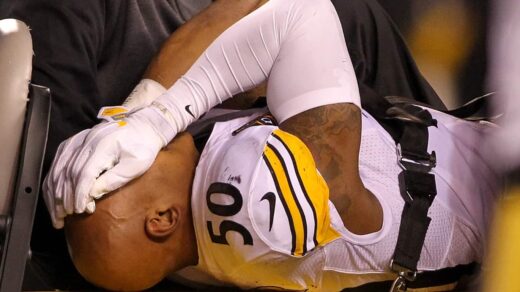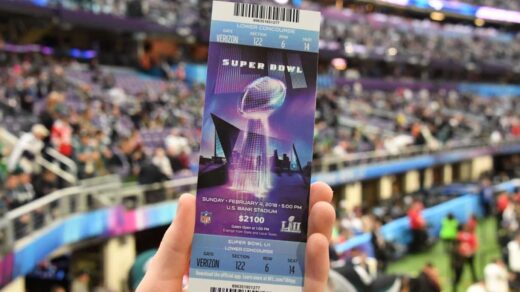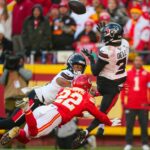Shoes are super important in sports! They help players run faster, turn quickly, and stay safe.
When you watch soccer and American football, the games might look similar. Both sports have players running on grass fields.
But here’s something interesting — soccer cleats and football cleats are NOT the same!
They look a bit alike, but they’re designed very differently. Each sport needs special shoes for special reasons.
American Football Cleats Vs Soccer Cleats

In this article, we’ll explain the main differences between American football cleats and soccer cleats in a simple, easy way.
Let’s learn what makes each type of cleat unique!
What Are Cleats and Why Do Players Wear Them?
Cleats are special sports shoes with small spikes on the bottom.
These spikes are called “studs.” They dig into the grass and help players grip the ground.
Without cleats, players would slip and slide all over the field! That would be dangerous and make playing very hard.
- Soccer players need cleats that help them run for 90 minutes straight. They need to feel the ball with their feet and move quickly.
- Football players need cleats that protect them during tackles. They need to push, stop suddenly, and stay balanced when other players hit them.
Here’s a quick comparison:
| Feature | Soccer Cleats | Football Cleats |
|---|---|---|
| Purpose | Ball control & speed | Stability & protection |
| Movement | Constant running | Short bursts, tackles |
| Playing Time | 90 minutes non-stop | Plays last 5-10 seconds |
Both types of cleats help players do their job, but in different ways!
Design Differences Between American Football Cleats and Soccer Cleats
One of the biggest differences is how the shoes look and fit around your ankle.
Soccer cleats are always low-cut. This means they stop below your ankle, like regular sneakers.
Why? Because soccer players need to move their ankles freely. They twist, turn, and kick the ball thousands of times in a game!
Football cleats come in THREE different styles:
Low-cut cleats:
- Stop below the ankle
- Best for speed positions like wide receivers
- Light and flexible
Mid-cut cleats:
- Come up to the ankle
- Good balance between speed and support
- Perfect for quarterbacks and running backs
High-cut cleats:
- Cover the ankle completely
- Give maximum ankle protection
- Used by linemen who need extra support
The design you choose depends on what position you play in football!
Weight Matters in Cleats
The weight of your cleats affects how fast you can run and how long you can play.
Soccer cleats are very light! They usually weigh between 7 to 10 ounces.
That’s about the same weight as a smartphone! Light shoes help soccer players run for the entire game without getting tired.
Football cleats are heavier. They typically weigh between 11 to 15 ounces.
Why the extra weight? Football cleats have more padding, stronger materials, and better protection.
Here’s a simple comparison:
| Type | Average Weight |
|---|---|
| Soccer Cleats | 7–10 ounces |
| Football Cleats | 11–15 ounces |
The heavier football cleats protect players when they crash into each other. Safety is more important than being super light!
Stud Pattern – The Bottom of the Shoe
Now let’s look at the bottom of the cleats. This is where the “studs” or spikes are located.
Studs are the small pieces that stick out from the bottom. They dig into the grass and give you grip.
Soccer cleats have:
- Short, round studs
- Even pattern across the bottom
- NO toe spike
- Designed for smooth running and quick turns
Football cleats have:
- Longer studs for better grip
- More aggressive pattern
- Often includes a toe spike in the front
- Help players push off powerfully
The toe spike on football cleats is super important! It helps linemen push against other players.
But here’s something crucial: Football cleats with toe spikes are NOT allowed in soccer!
Why? Because that front spike could hurt other players during slide tackles. Soccer has strict rules about cleat safety.
Midsole and Cushioning
The midsole is the middle layer of the shoe, between the bottom and the inside.
Soccer cleats usually have NO midsole. Your foot sits very close to the ground.
Why? Because soccer players need to FEEL the ball with their feet. The closer your foot is to the ball, the better your control!
Football cleats HAVE a midsole. This extra layer provides cushioning and shock absorption.
When a 250-pound linebacker tackles you, that midsole helps protect your feet and joints!
The cushioning in football cleats helps absorb the impact from:
- Running and stopping suddenly
- Getting hit by other players
- Jumping and landing
- Pushing in the trenches
Soccer players don’t need this extra cushioning because they rarely collide with full force like football players do.
Fit and Comfort
How cleats fit on your feet makes a big difference in how you play!
Soccer cleats fit TIGHT and SNUG — almost like wearing a glove on your foot.
The tight fit helps you feel exactly where the ball is. When you kick, dribble, or pass, you want perfect control.
Many soccer players even say their cleats should feel “like a second skin”!
Football cleats are ROOMIER with extra padding inside.
There’s more space around your toes and more cushioning around your ankle and heel.
Why? Because football players wear thicker socks and need protection from impacts.
The extra room also helps during cold weather when players might wear two pairs of socks!
Can You Swap Them?
This is a question many young players ask: “Can I use my soccer cleats for football? Or my football cleats for soccer?”
Here’s the answer:
✅ Soccer cleats for football = Sometimes okay
Some football positions can wear soccer cleats, especially:
- Wide receivers (they need speed)
- Defensive backs (they need to run a lot)
- Kickers (they need ball control)
Many NFL players actually prefer soccer cleats for these speed positions!
❌ Football cleats for soccer = NOT ALLOWED
You should NEVER wear football cleats for soccer because:
- The toe spike is dangerous during slide tackles
- They’re too heavy for constant running
- Soccer leagues have rules against them
- You could hurt other players
Always check with your coach about what type of cleats are allowed!
Complete Comparison Table
Here’s everything we learned in one easy table:
| Feature | Soccer Cleats | Football Cleats |
|---|---|---|
| Design | Low-cut only | Low, mid, or high-cut |
| Weight | Very light (7-10 oz) | Heavier (11-15 oz) |
| Studs | Short & round | Long with toe spike |
| Midsole | None | Yes, for comfort |
| Fit | Tight & close | Roomy with padding |
| Purpose | Speed & control | Power & protection |
| Ankle Support | Minimal | Low to high support |
| Best For | Constant running | Short bursts & tackles |
Why These Differences Matter?
You might wonder why we need different cleats for different sports.
The answer is simple: each sport has different needs!
Soccer players run 7-10 miles during a game! They need light shoes that won’t slow them down.
Football players sprint for short distances but face powerful collisions. They need protective shoes that keep them safe.
Using the wrong cleats can:
- Make you slower
- Increase injury risk
- Hurt your performance
- Break league rules
That’s why choosing the right sports gear for your specific sport is so important!
Conclusion:
Now you know the key differences between American football cleats and soccer cleats!
Soccer cleats are light, low-cut, and designed for speed and ball control. They help players run for 90 minutes straight.
Football cleats are stronger, heavier, and built for power and protection. They come in different heights for different positions.
Remember these main points:
- Each sport needs its own special cleats
- The right cleats keep you safe, fast, and comfortable
- Never use football cleats for soccer (safety rules!)
- Some soccer cleats work okay for speed positions in football
Whether you play soccer, football, or both sports, always choose cleats made specifically for what you’re playing.
Your feet will thank you, your coach will be happy, and you’ll play your best game!
Now get out there and play — with the RIGHT cleats on your feet!
For more sports gear tips, football advice, and everything about the game — visit FieldBulls.com, your trusted source for sports knowledge!








